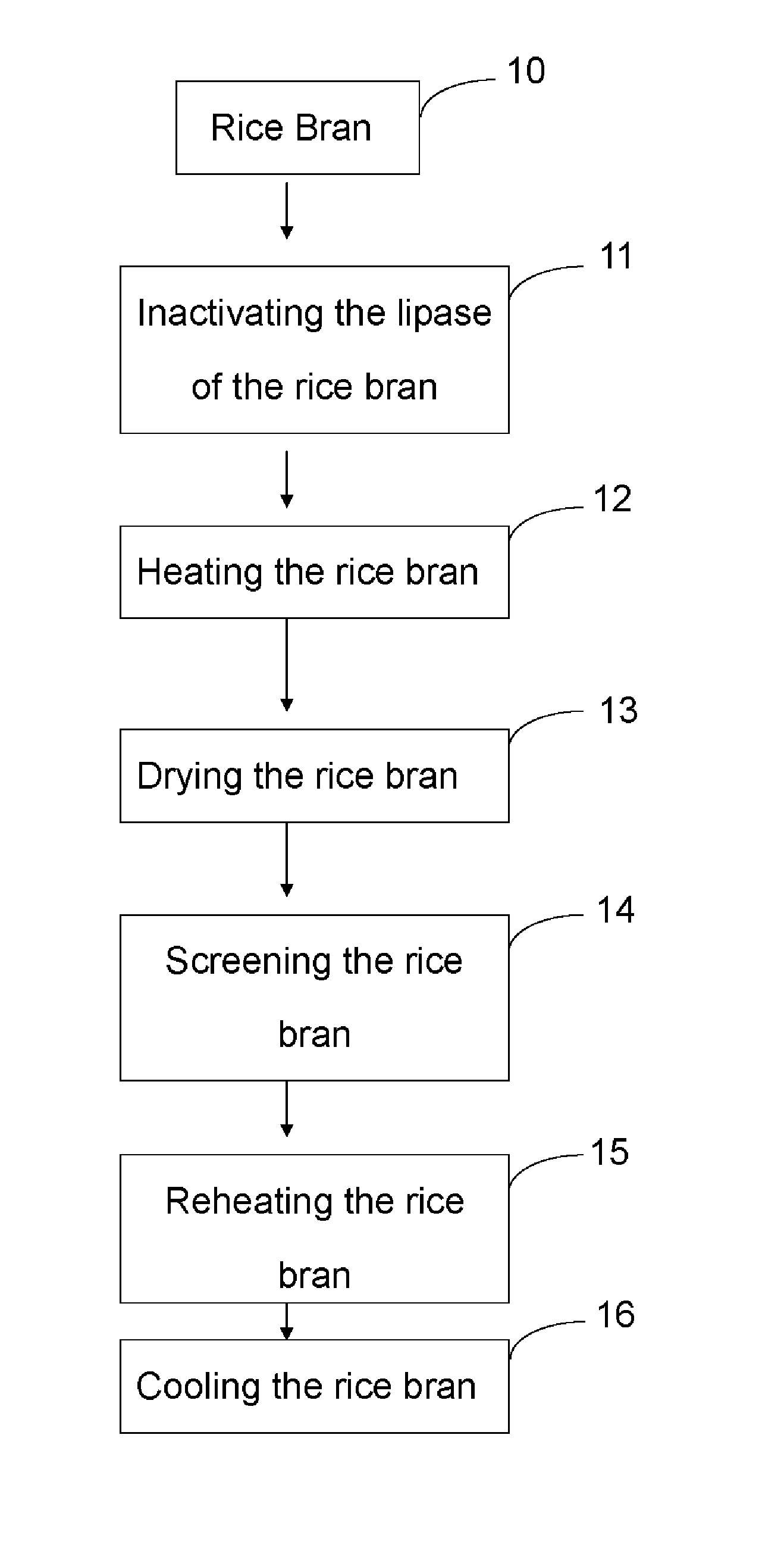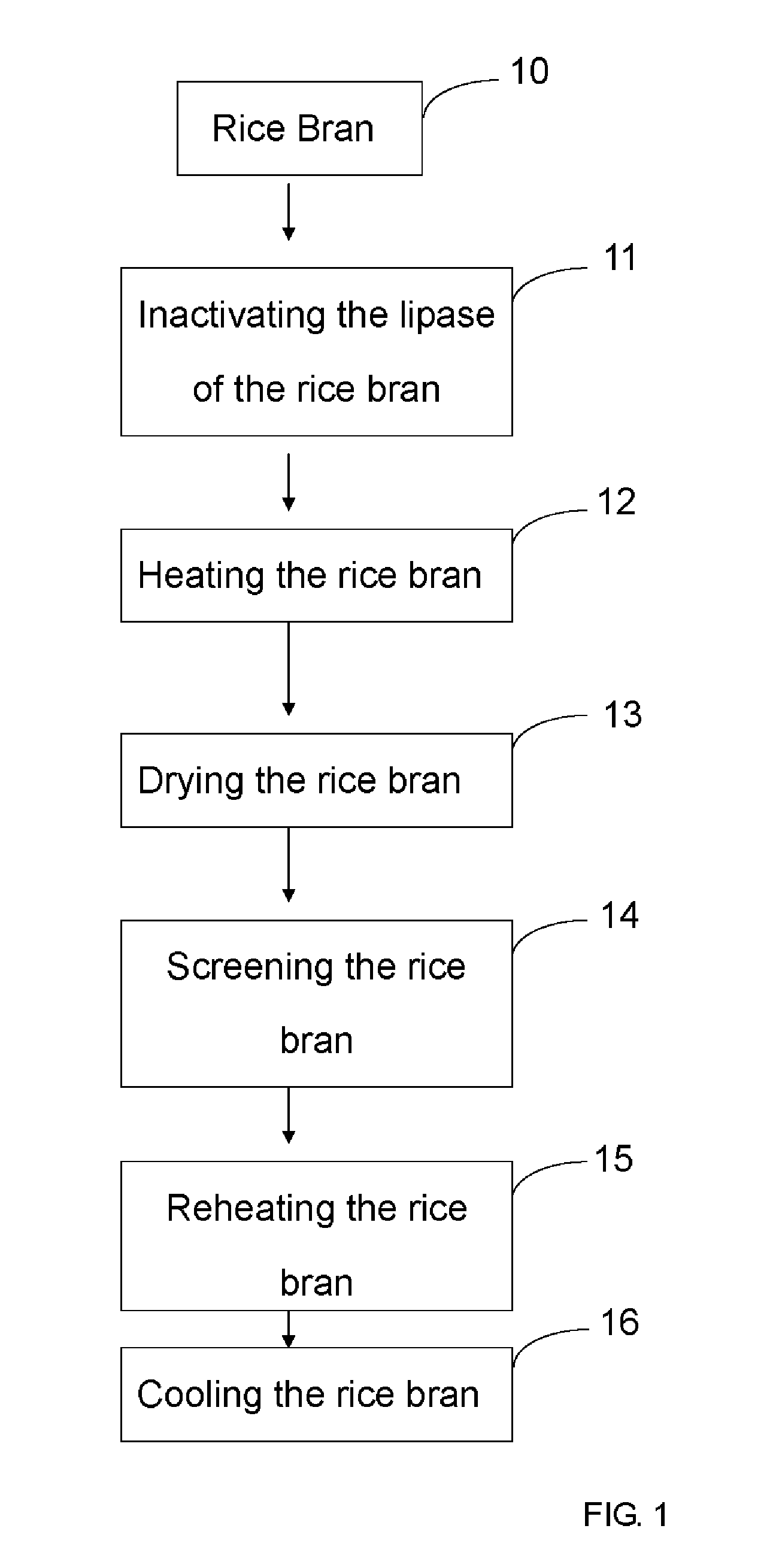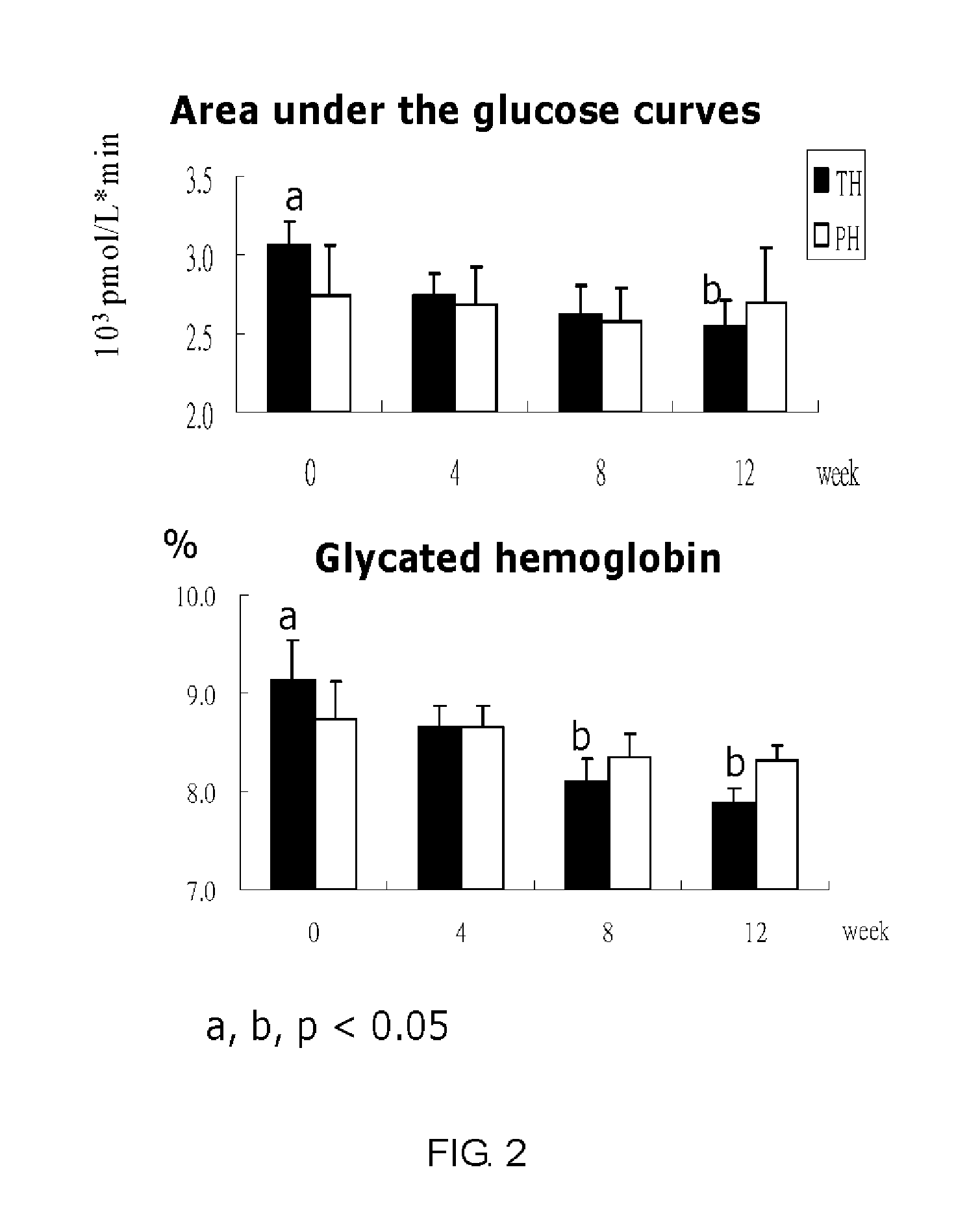Rice bran flour and method of making thereof
a technology of rice bran and flour, which is applied in the field of rice bran flour, can solve the problems of affecting the quality of rice bran products, complicated process for making rbws, and bound to limit the use of rbws in food manufacture, and achieves the effects of improving the effect of glycosylated hemoglobin and insulin of diabetes patients, reducing the risk of contamination, and low contamination
- Summary
- Abstract
- Description
- Claims
- Application Information
AI Technical Summary
Benefits of technology
Problems solved by technology
Method used
Image
Examples
example 1
Preparation of the Rice Bran
[0040]Tainun No. 67 rice is husked to collect the rice bran, then the lipase of the rice bran is inactivated at 70° C. for 4 hours within 24 hours after the rice bran is collected. After that, the rice bran is heated by a pasteurizing machine at 121° C. for 40 min, then dried using an oven set at 70-80° C. The rice bran is then screened with a stainless steel 28 mesh sieve, and the rice bran flour obtained is separately bagged in 20-grams bags, which are heated again in a pasteurizing machine at 121° C. for 40 min. Then the rice bran flour is cooled and stored at room temperature for later use.
example 2
Blood Sugar Concentration and Glycosylated Hemoglobin Test
[0041]In this example, tests are performed on 38 Type II diabetes mellitus patients (16 males and 22 females). The patients are randomly divided into 2 groups: the group using the rice bran flour made by the method of the present invention is called treatment group (T), and the group using commercial rice flour called placebo group (P). Within these two groups, those with HbA1c1c≧7.8 are called treatment high group (TH) and placebo high group (PH), respectively. Every patient in all groups takes 20 grams of rice bran or commercial rice flour per day.
[0042]The oral glucose tolerance test (OGTT) are performed at week 0, 4, 8, and 12 during the experiment. The blood sugar concentration and glycosylated hemoglobin (HbA1c) are analyzed using commercial test kits (RANDOX Lab-Ltd., Britain). The area under the glucose curves (AUC glucose) is the blood sugar concentration multiplied by time. The blood sugar concentration and glycosyl...
example 3
Insulin Concentration Test
[0045]The 38 Type II diabetes mellitus patients (16 males and 22 females) are divided as in Example 2. The patients are randomly divided into 2 groups: the group using the rice bran flour made by the method of the present invention is called treatment group (T), and the group using commercial rice flour called placebo group (P). Within these two groups, those with HbA1c1c≧7.8 are called treatment high group (TH) and placebo high group (PH), respectively. Every patient in all groups takes 20 grams rice bran or commercial rice flour per day.
[0046]The oral glucose tolerance test (OGTT) are performed at week 0, 4, 8, and 12 during the experiment. The insulin concentration is analyzed using commercial test kits (RANDOX Lab-Ltd., Britain). The area under the insulin curves (AUC insulin) is the insulin concentration multiplied by time. The insulin concentration of the patients of Example 3 are shown in Table 2.
[0047]
TABLE 2The area under the insulin curves ofthe p...
PUM
 Login to View More
Login to View More Abstract
Description
Claims
Application Information
 Login to View More
Login to View More - R&D
- Intellectual Property
- Life Sciences
- Materials
- Tech Scout
- Unparalleled Data Quality
- Higher Quality Content
- 60% Fewer Hallucinations
Browse by: Latest US Patents, China's latest patents, Technical Efficacy Thesaurus, Application Domain, Technology Topic, Popular Technical Reports.
© 2025 PatSnap. All rights reserved.Legal|Privacy policy|Modern Slavery Act Transparency Statement|Sitemap|About US| Contact US: help@patsnap.com



